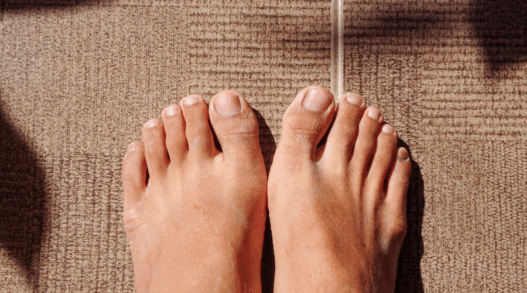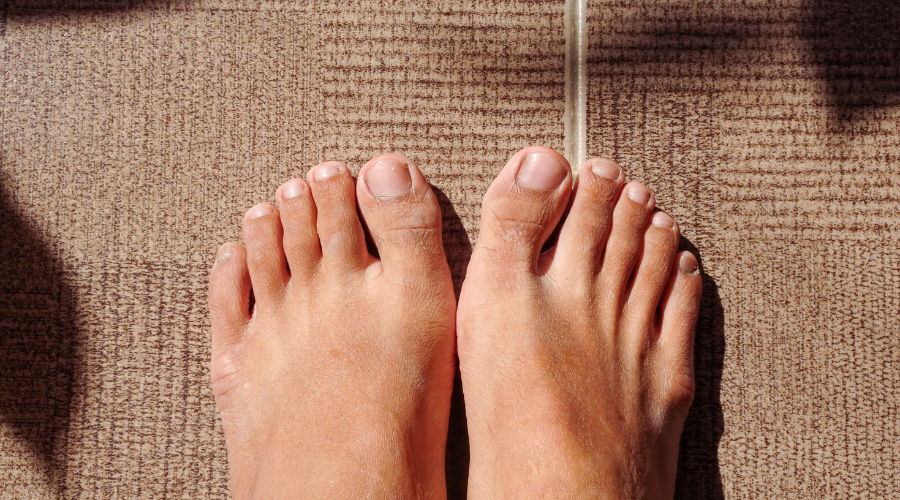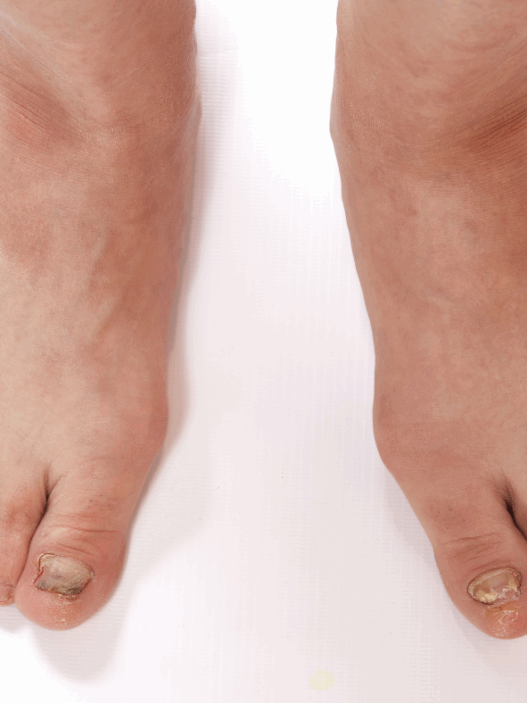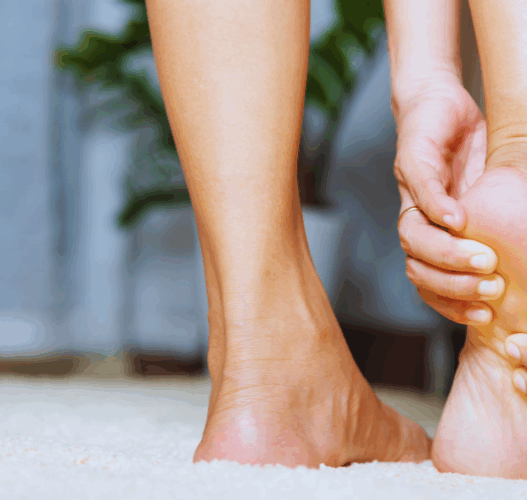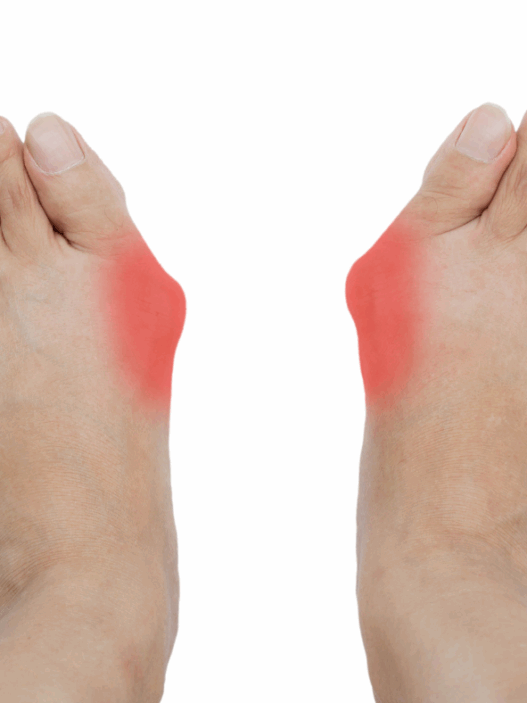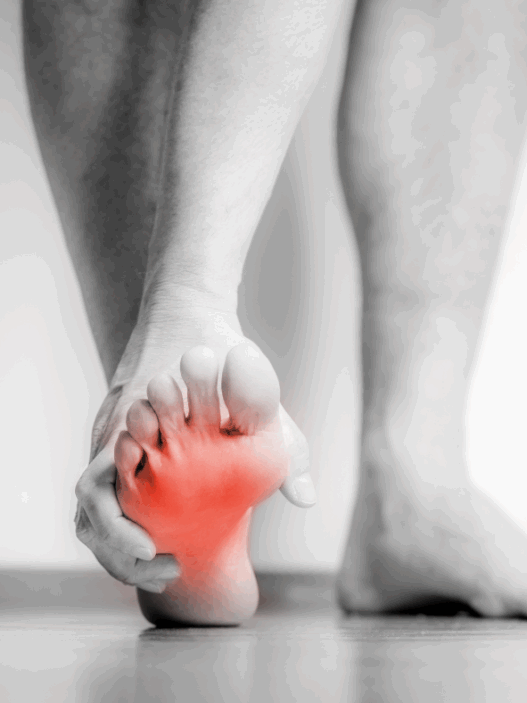As a podiatrist with over a decade of experience, one of the most common misconceptions I encounter in my clinic is patients who assume their yellow toenails are automatically fungal infections. “I’ve got fungus,” they’ll say confidently, often after self-diagnosing based on internet searches or, increasingly concerning, after watching viral videos of nail technicians “treating fungal nails” with cosmetic overlays.
I’m here to tell you: not all that appears yellow is fungal.
The Yellow Toenail Mystery
Yellow discoloration in toenails is incredibly common, and while fungal infections (onychomycosis) are indeed a frequent culprit, jumping to this conclusion without proper testing can lead to months of ineffective treatments, unnecessary expenses, and continued frustration.
Let me be clear: genuine fungal nail infections exist and can be severe, often requiring oral medication rather than just topical treatments. Many of the patients I see do have legitimate fungal infections that need comprehensive treatment.
However, this blog focuses on those cases where patients are treating for fungus when their yellow nails might have a completely different cause. This misdiagnosis is more common than you might think.
When a new patient sits in my chair and points to their yellowed nail, I often notice immediately that the nail doesn’t actually display the typical characteristics of fungal infection that I’m trained to recognize. Yet they tell me they’ve been applying over-the-counter antifungal treatments from the pharmacy for months or even years with minimal improvement.
Why? Because they might be treating the wrong condition entirely, and have spent substantial money on expensive products that were never going to help their specific condition.
Beyond Fungus: What Else Causes Yellow Toenails?
Your toenails can turn yellow for numerous reasons:
- Nail Trauma: Stubbing your toe or repetitive pressure (like from tight shoes) can cause damage to the nail bed that results in yellow discoloration. This is especially common in athletes and people who wear ill-fitting footwear regularly.
- Nail Polish Staining: Dark-colored polishes can leave behind a yellowish tint, especially if you don’t use a base coat. Importantly, this discoloration requires a prolonged break from nail polish to see improvement, as the stained portion must completely grow out.
- Aging: As we get older, our nails naturally thicken and may develop a yellowish hue due to reduced blood flow and natural changes in the nail structure.
- Nail Psoriasis: This skin condition can affect nails, causing pitting, thickening, and yellow-brown discoloration.
- Yellow Nail Syndrome: A rare condition that causes slow-growing yellow nails, often alongside respiratory issues.
- Diabetes: This is a significant cause of nail changes, including yellowing, thickening, and brittleness due to reduced circulation and increased vulnerability to infections.
- Other Medical Conditions: Thyroid disorders, liver disease, and respiratory issues can also manifest as changes in nail color and texture.
The Social Media “Expert” Problem
Recently, I’ve noticed an alarming trend of nail technicians on social media posting viral videos claiming to “fix fungal toenails” with simple overlays and sprays. What’s likely happening in these videos is much simpler: when someone stops getting gel polish applications and starts using a nail treatment, the nail naturally grows out and improves in appearance.
This improvement isn’t because they’ve “cured fungus” – it’s because if the yellow discoloration was caused by nail polish staining or minor trauma, allowing the nail to grow naturally will gradually resolve the issue.
It’s worth noting that some of these professional overlay products do contain antimicrobial ingredients like silver colloid, which may have beneficial properties. However, without proper diagnosis, there’s no way to know if these products are addressing the actual underlying cause of the yellowing.
How Do We Properly Diagnose Yellow Toenails?
This is why I always recommend starting with a proper diagnosis. While microscopy and fungal culture were traditionally considered the standard tests for nail infections, in our clinics we now use PCR testing as our standard diagnostic approach.
PCR testing is a highly accurate method that analyzes DNA to identify the specific organisms present in your nail. For this test:
- We take small clippings from your affected toenail
- These samples are sent to a specialized laboratory
- DNA analysis identifies any fungi or bacteria present
- Results typically return within a week
The beauty of PCR testing is its incredible accuracy and specificity. Not only can it tell us if fungus is present, but it can identify exactly which type of fungus or bacteria is causing the issue, allowing for targeted treatment. This advanced diagnostic approach helps eliminate the guesswork and ensures we’re treating the actual cause of your yellow toenails, not just making an educated guess.
The Fungal Connection: Understanding How Infections Really Develop
For those cases where testing does confirm a fungal infection, it’s important to understand how these infections typically develop. For a true fungal toenail infection (onychomycosis) to occur, two key elements must typically be present:
- Tinea pedis (athlete’s foot) – This is the fungal skin infection that affects the feet. Most patients who present with onychomycosis already have tinea pedis present, even if they don’t realize it.
- Nail trauma – Some form of damage to the nail plate is usually necessary to allow the fungal infection to penetrate underneath the nail.
This explains why not everyone who has athlete’s foot develops fungal toenails. Without damage to the nail plate creating an entry point, the fungus typically remains on the skin without affecting the nails.
Unfortunately, many people misdiagnose tinea pedis as simply “dry skin” or “peeling skin,” especially when it doesn’t itch. They don’t realize that this skin condition is actually a fungal infection that, when combined with nail trauma, can lead to infected toenails.
This is another reason why proper diagnosis is so important. When I examine a patient with yellow toenails, I’m always looking for signs of tinea pedis as well, as treating both conditions simultaneously is essential for preventing recurrence.
Understanding Patient Reactions to Diagnosis
Interestingly, I’ve noticed many patients seem to prefer hearing their yellow nail is fungal rather than caused by nail trauma or lifestyle factors. There’s often a psychological comfort in believing a condition is caused by an external invader (like a fungus) rather than accepting it might be related to one’s own habits, footwear choices, or injuries.
In my practice, I’ve seen patients from all walks of life—athletes, office workers, tradespeople, and retirees—show visible disappointment when their test comes back negative for fungus. “But now what’s wrong with my nails?” they often ask. When I explain the discoloration might be due to pressure from tight footwear, repetitive impact during sports, or even how they trim their nails, some find this harder to accept than a fungal diagnosis.
This reaction is completely understandable. A fungal infection seems like a clear-cut problem with a defined solution, while addressing lifestyle factors or waiting for trauma to heal requires patience and potentially changing established habits.
Treatment: A Personalized Approach
Treatment for yellow toenails varies widely depending on the actual cause:
- Fungal Infections: Require antifungal medications, either topical or oral, prescribed by a healthcare professional. Remember that treating any underlying tinea pedis is also crucial.
- Nail Trauma: Often improves with time as the nail grows out, but may require addressing the source of trauma (changing footwear, modifying activities).
- Nail Polish Staining: Usually resolves by avoiding dark polishes and always using a base coat.
- Medical Conditions: Requires treatment of the underlying condition.
In some cases, we might recommend surgical removal of severely damaged nails or special cosmetic restorations that allow the nail to grow while it heals.
When to See a Podiatrist
You should consider booking an appointment with a podiatrist if:
- Your toenail discoloration persists for more than a few weeks
- The nail becomes thickened, brittle, or changes shape
- You experience pain, swelling, or redness around the nail
- You have diabetes or poor circulation
- Over-the-counter treatments haven’t helped after several weeks
- You’re unsure about the cause of the discoloration
FAQs About Yellow Toenails
Q: Can I just try an over-the-counter antifungal cream first?
A: While you can, I don’t recommend it. Without proper diagnosis, you could waste time and money treating the wrong condition. A professional assessment first will save you both in the long run.
Q: Are yellow toenails contagious?
A: Fungal toenails (onychomycosis) themselves aren’t directly contagious. However, the real concern is tinea pedis (athlete’s foot), which is contagious and often serves as the starting point for fungal toenail infections. The fungus typically infects the skin first and then spreads to the nails. So while you can’t “catch” someone’s yellow toenails directly, you can potentially contract the underlying fungal infection that causes them. Yellow nails from other causes like nail trauma, polish staining, or medical conditions are not contagious at all.
Q: How long will it take for my yellow toenail to return to normal?
A: This depends on the cause and your treatment plan. Toenails grow slowly—about 1mm per month. A full toenail replacement can take 12-18 months, even with successful treatment.
Q: Can nail salon treatments fix my yellow toenails?
A: Cosmetic treatments can mask the appearance but won’t address underlying issues. In fact, some treatments like gel polish or acrylics can worsen fungal infections by trapping moisture.
Q: Does having yellow toenails mean I have poor hygiene?
A: Absolutely not! Yellow toenails can happen to anyone, regardless of hygiene practices. Many causes are completely unrelated to cleanliness.
Prevention: Keeping Your Nails Healthy
To keep your toenails looking their best:
- Keep feet clean and dry
- Treat any signs of tinea pedis (athlete’s foot) immediately, even if it just looks like “dry skin” between the toes
- Wear breathable shoes and moisture-wicking socks
- Avoid tight-fitting shoes that put pressure on nails
- Use a base coat when applying nail polish
- Don’t leave polish on for extended periods
- Be cautious in public showers and pools
- Don’t share nail tools
The Bottom Line
Remember: not all that’s yellow is fungal. Before embarking on lengthy antifungal treatments or covering the problem with potentially harmful cosmetic solutions, visit a podiatrist for proper diagnosis. Your yellow toenails might be telling you something important about your health—make sure you’re getting the right message.
For professional diagnosis and treatment of your nail concerns, book an appointment at our clinic today.
 About the Author: This article was written by Dr. Rudo Makuyana, a senior podiatrist with over 10 years of experience practicing in Sydney, Australia. Specializing in nail conditions and foot health, Dr. Makuyana has treated thousands of patients with toenail concerns and is passionate about providing accurate information and effective treatment options.
About the Author: This article was written by Dr. Rudo Makuyana, a senior podiatrist with over 10 years of experience practicing in Sydney, Australia. Specializing in nail conditions and foot health, Dr. Makuyana has treated thousands of patients with toenail concerns and is passionate about providing accurate information and effective treatment options.
